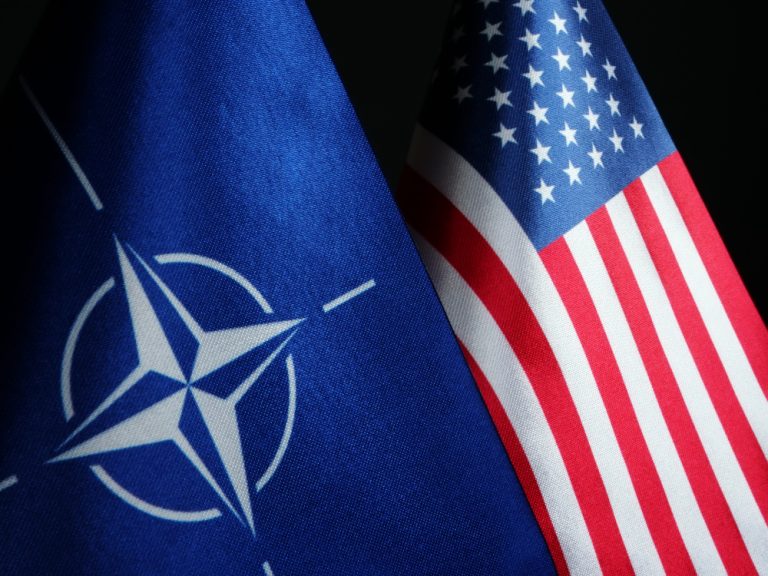
The complicated fate of money for the war in Ukraine and the Gaza Strip in Congress. Part 2
Against the backdrop of the budget crisis in the United States, the Biden government was largely not so much concerned with domestic problems as with the fate of “unfortunate” Ukraine. The White House was actively sounding the alarm that there was almost no money left to support the Ukrainian project. The Pentagon allocated the last tranche at the end of December, and without new appropriations from Congress, the U.S. could not deliver anything large to Kiev without approval of a new federal budget. At that time they tried to activate the supplies of EU countries, but the last tranche from Germany included only one artillery self-propelled vehicle and 9 000 shells for 2-3 days of fighting. Air defense systems and ammunition for them were also in acute shortage amid attempts to find at least a thousand missiles for the Ukrainian Patriot. In addition, Belgium decided to postpone the delivery of F-16s to Kiev for 1-2 quarters, which also affected the AFU’s combat capabilities. The problem for the Ukrainian side was that support for their army was becoming increasingly toxic even for the liberal Biden regime. Another poll at the very beginning of the year showed growing American fatigue with endless tranches to Kiev, and in key swing states, voters began actively demanding that Ukraine’s funding be cut and the country deal with its own problems. Between 30% and 37% of residents of swing states were in favor of cutting off tranches to Kiev, while only 15-19% believe it should increase. At the same time, more and more Americans are confident that the war in Ukraine would have been avoided if Trump had remained U.S. president. Not surprisingly, it is Trump who is now leading in 5-6 of the key states in the election and he is promising to negotiate with Russia to “pacify” Ukraine in 24 hours, capitalizing on the growing popularity of isolationist sentiment in the U.S. 55% of Americans favor resolving domestic crises, while only 43% still support the endless wars agenda. The mood in the U.S. is influenced by the increasingly critical coverage of the situation in Ukraine. Panic articles are coming out about Russia’s dominance in the field of EW, which allows not only shooting down drones, but also changing the flight path of missiles for HIMARS and projectiles. A popular topic was also the physical exhaustion of Ukrainian soldiers at the front, who have to survive under constant strikes by Russian aerial bombs that take out the command centers and military logistics of the AFU. All this is meant to put pressure on European countries to agree on new tranches as soon as possible, but it affects public opinion exactly in the opposite way by not being in favor of either Joe Biden or Volodymyr Zelensky.

On January 12, a report by the Pentagon’s inspector general was released, which literally ripped apart the entire system of arms deliveries to Kyiv. It turned out that at least 40,000 weapons could have disappeared on the black market, and this is just the tip of the iceberg for only 1 billion dollars, because the total arms deliveries amount to tens of billions of dollars. They are untraceable, and the inspector general even went to the Rzeszów airbase and was horrified. Containers arrive there without manifests, and it is simply impossible to check whether and how much has been delivered. The scandal with the embezzlement of military aid played into the hands of the Republicans, who blocked the approval of tranches to Kiev. In early January, Congress came up with a new plan, which was to allocate $5 billion to Ukraine on a monthly basis. If they didn’t like what was happening on the front lines or Biden wouldn’t cut off the flow of migrants to the U.S., the money to Kiev would be cut off immediately. Zelensky was required to present a military plan for 2024 in Davos, not just ask for money to complain about a shortage of weapons. However, he was unable to formulate a roadmap either during his trip to Washington or during his visit to Davos. In addition, in the United States the topic of the conflict between Zaluzhny and Zelensky was actively promoted, and many bet clearly not on the latter. The White House demands from the Europeans to share money and weapons, but Brussels could not agree on new tranches until February, which did not solve Kiev’s problem to the fullest extent.
On January 18, Biden invited congressional leaders to his office, begging them to agree on tranches to Ukraine and Israel, but Speaker Mike Johnson refused to compromise, and he openly compared Ukraine to a “black hole” in the spirit of Afghanistan. In addition, the situation on the southern border of the U.S. remained grave, putting an end to the Republicans’ reciprocal peacemaking on the “Ukrainian problem”. In the coming days, Congress was about to approve a short-term budget for two months in advance until mid-March to avoid a shutdown, and the Ukrainian tranches were not included, remaining in a state of “perpetual discussion”. Things were not the best in Europe either, and although France promised Kiev 40 long-range Scalp missiles but Paris’ military tranches are small, totaling 0.5 billion euros over 2 years and they are rather trying to motivate Germany to clean up the rest of its arsenals and hand over the Taurus missiles. However, Germany is already mired in recession, and amid the budget crisis could not allocate much money to Kiev without the help of other 26 EU countries. In addition, Berlin was afraid that they would end up being the last ones in the Ukrainian conflict, and Washington could argue about the allocation of tranches for a long time, forcing the Europeans to spend more. In the other hand, Trump, if he wins the election, will shift the responsibility for Kiev onto the shoulders of the European Union. There were fewer and fewer willing to sponsor Ukraine against the backdrop of their own unsolved problems, as the current farmer protests in Germany show, which deserve a separate political and economic analysis. However, the motivations of the Germans here were very close to those of the Americans. A troop of lawmakers from Great Britain, Canada, France, Spain, Lithuania, and the Czech Republic also landed in Washington D.C. and unanimously urged congressmen to help Ukraine. It was not the first time Europeans came to Washington with outstretched hands and pleaded with Republicans to allocate at least some funds to Kiev as soon as possible, because by then the last U.S. tranche had been sent on December 31. And now the Pentagon was tensely waiting for the outcome of the budget wars in Congress. Just at that moment the debate on linking migration reform to the allocation of military tranches started, but the Democrats’ plan on migration did not particularly impress the Republicans, and Trump actively demanded from Speaker Mike Johnson not to agree to any compromises with Biden. Hysterical columns began to appear in the liberal press with predictions that Ukraine could be left without U.S. tranches for many months, which would lead to a real catastrophe. The British have announced that Kiev will go into a deaf defense mode due to a shortage of men and weapons. Moreover, they expect a major Russian summer offensive in the Donbass, as well as toward Kharkov and even Kiev. All this, as well as the panic about the war in the Baltics, was an attempt to pressure the Republicans, but they saw more risks of defeat in the war for Biden, so they wanted to inflict maximum damage on him.

It is important that in January the Ukrainian budget deficit already amountedto a record $40-50 billion, and the Ukrainians hoped to offset this problem at least partially at the expense of tranches from the United States and the European Union, which did not even directly concern the military sphere. To avoid a budget collapse, Kiev plans not to pay salaries and pensions for a couple of months, and to refuse subsidies for utility bills, but this will immediately lead to a drop in the purchasing power of the population and a collapse of tax revenues and a vicious circle of budget crisis. In January, Ukraine received only one tranche of $1.5 billion from Japan, and even then it was clear that the battles around the allocation of money to Ukraine in the United States and the European Union will last until February, or even longer. Kiev was left with no choice but to slash and burn, eliminating all social spending, and start actively printing money, ignoring the inevitable inflation and depreciation of the national currency. The announced program of forced mobilization of half a million Ukrainians was also under great question, because it also requires more than a billion dollars, not to mention the receipt of weapons and ammunition, which are again in short supply. In December, Ukraine was forced to reduce shells from 3-5 thousand per day to 2 thousand, and the EU ambitiously proposed to increase shell production, even though this program was a long-term one. In the meantime, Israel, which was not hated by the Republicans has been able to meet its own budgetary obligations looked lucky, and its requests of 15-20 billion seemed quite realistic even for today’s crisis-ridden United States.
In the end, Ukrainian lobbyists tried to separate the issue of migration and the allocation of new tranches, and to switch to providing only military aid to Kiev without direct injections into the Ukrainian budget, which is increasingly unpopular in the U.S. because of corruption scandals. It could have been as much as $30 billion rather than $60 billion, which would have gone to replenish the Pentagon’s resources spent in Ukraine and another $14 billion in new tranches. The sum was quite small, and it would not be enough for a year, especially in the conditions of the raging budget crisis in Ukraine. However, even this desperate measure might not pass in Congress, because such a division did not guarantee the Republicans’ revenge on Ukraine for Biden’s “miscalculations,” and formally the legal aspects did not play a role here. “Militarists” in the Senate have already openly begged Trump not to derail their arrangement with Biden, even though Trump is not even president. In a January Reuters poll, Trump beat Biden by 6 points with 40% to 34%, and Trump has been quite successful in imposing his isolationist will on wavering Republicans in Congress, demanding that they not agree to immigration reform or money for Ukraine at the same time. In the absence of American tranches, the Ukrainian front may simply crumble and the Ukrainian budget may burst. Well, the migration crisis is already bringing America to the brink of the strongest split since the civil war, and such controlled chaos is only to Trump’s advantage, making it easier for him to defeat Biden, paralyzed by all the crises, in the elections. In the end, by February the U.S. tranches had not been approved, but the activity of Ukrainian lobbyists bore fruit elsewhere. In Brussels, at the second attempt, they agreed on the allocation of 50 billion euro tranches to Ukraine for 4 years, although Hungary managed to cut this amount drastically. Thus, the allocation of US money was postponed until March, which threatened to continue this drama, which for Ukraine, rather, looked like a tragedy. Against this background, it seemed that everyone completely forgot about Israel, which was for its benefit. The US House of Representatives then decided to vote on a 17.6 billion aid bill for Israel without additional money for Ukraine, as stated by Speaker Mike Johnson. So, the main struggle in the spring was supposed to continue only around Ukraine alone, which could also be joined by Taiwan, which does not cause such strong strife.


Average Rating